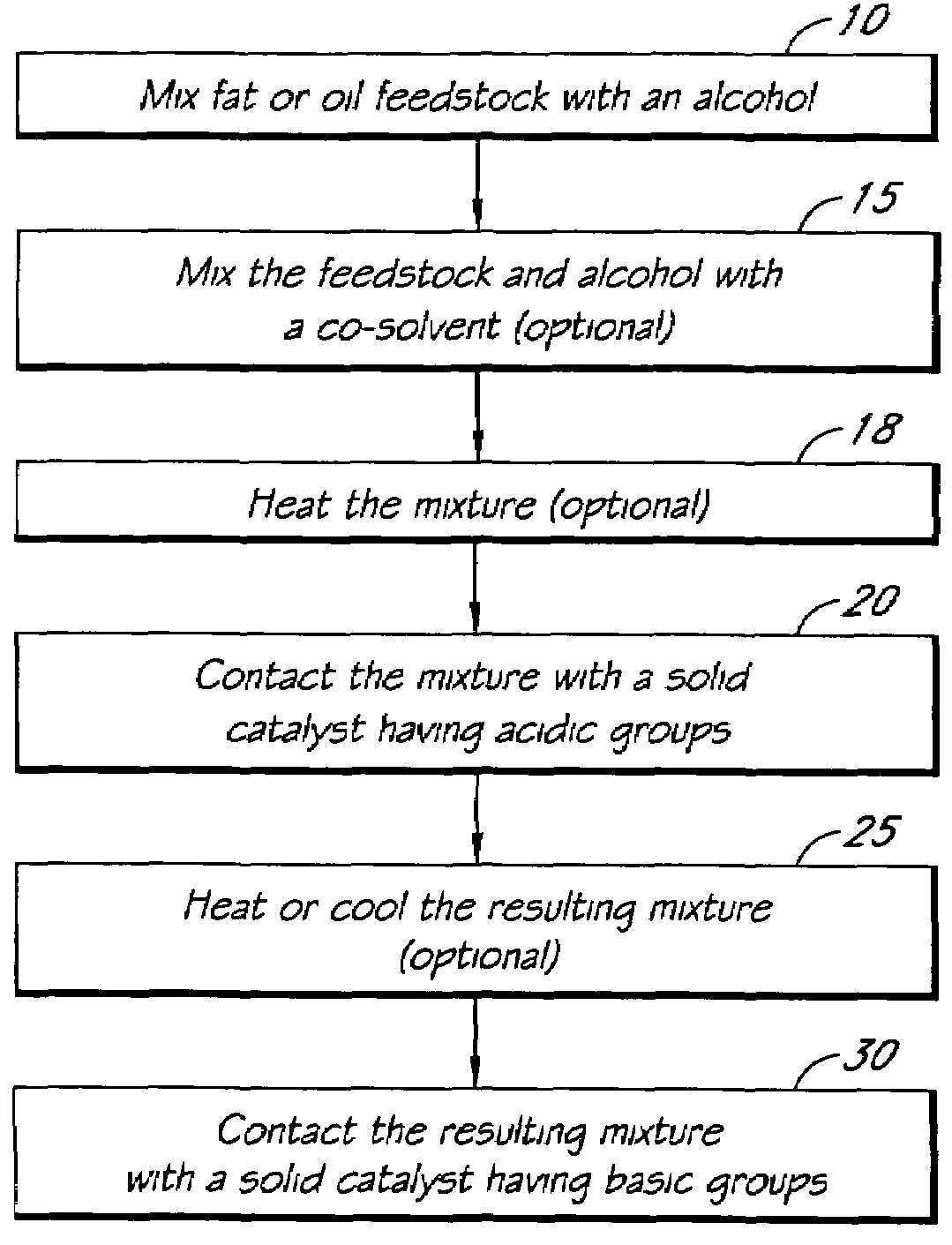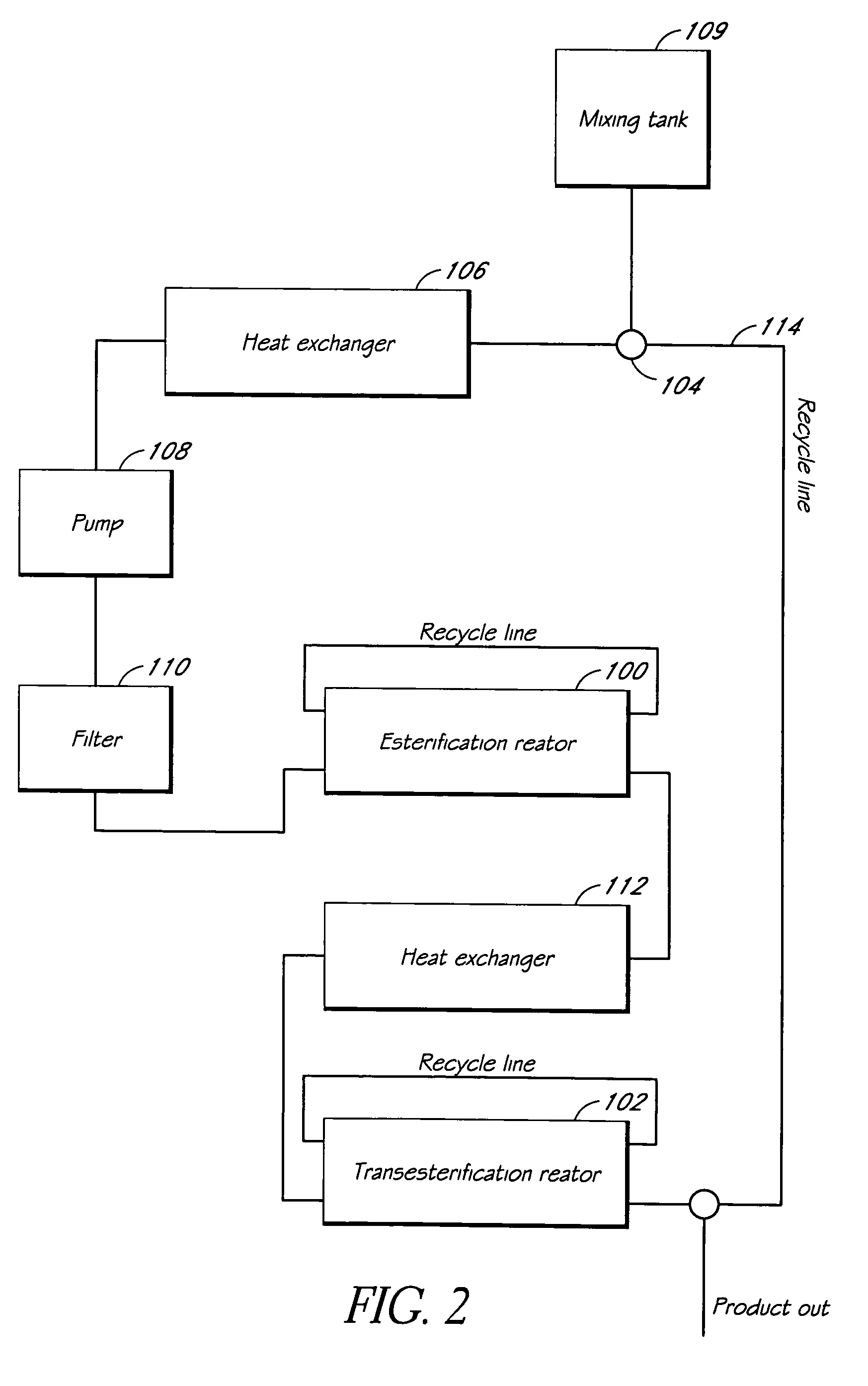Systems and methods for esterification and transesterification of fats and oils
a technology of esterification and transesterification, which is applied in the direction of fatty oil/fats separation, fatty oil/acid recovery from waste, fatty-oil/fat refining, etc., can solve the problems of poor product yield, long residence time lasting, and the use of homogeneous catalysts
- Summary
- Abstract
- Description
- Claims
- Application Information
AI Technical Summary
Benefits of technology
Problems solved by technology
Method used
Image
Examples
example 1
—Laboratory Conversion using Ion Exchange Resins
[0035]Animal fat (Yellow Grease) obtained from Lakeside Packers, Brooks AB, a beef packaging unit, was used as the raw fat feedstock. The animal fat contained less than 1 % moisture and about 1 % free fatty acid. In order to simulate higher free fatty acid content in the fat, 99% pure oleic acid was added to the animal fat to obtain a free fatty acid fat concentration of 15% w / w. A standard laboratory cylindrical high pressure autoclave (2 L volume) was used for the reaction vessels. The autoclave had provisions for mixing, electrical heating, water cooling and pressurizing the contents. The autoclave was pressurized using a high pressure nitrogen bottle.
[0036]100 gm of animal fat containing 15% w / w free fatty acids was placed in a 2 L round bottom flask. Methanol in the ratio of 60:1 and 336 grams of THF were added and completely mixed to a single phase. The methanol and THF used were of more than 99% purity. The entire contents of th...
example 2
[0038]A single train continuous operation plant was constructed using two packed column reactors. The first reactor was packed with 10 liters of a strong acidic cation exchange resin (C381BH from US FILTERS®) in the form of about 0.3 mm diameter spheres. The second reactor was packed with 10 liters of a strong basic anion exchange resin (A674BOH from US FILTER®), also in the form of 0.3 mm to 1 mm diameter spheres. Both columns measured four inches (4″) in diameter and five feet (5′) in length and were equipped with a six inch (6″) diameter jacket around their entire length to provide temperature control. Heat exchangers were provided upstream of both reactors. The reactor columns and heat exchangers were connected in series forming a single train, interconnected by ½″ tubes with appropriate ball valves for isolation and needle valves for flow control. All columns were mounted vertically with the whole unit sitting on a seven foot by three foot base frame and measuring a...
PUM
| Property | Measurement | Unit |
|---|---|---|
| pressure | aaaaa | aaaaa |
| pressure | aaaaa | aaaaa |
| temperatures | aaaaa | aaaaa |
Abstract
Description
Claims
Application Information
 Login to View More
Login to View More - R&D
- Intellectual Property
- Life Sciences
- Materials
- Tech Scout
- Unparalleled Data Quality
- Higher Quality Content
- 60% Fewer Hallucinations
Browse by: Latest US Patents, China's latest patents, Technical Efficacy Thesaurus, Application Domain, Technology Topic, Popular Technical Reports.
© 2025 PatSnap. All rights reserved.Legal|Privacy policy|Modern Slavery Act Transparency Statement|Sitemap|About US| Contact US: help@patsnap.com



